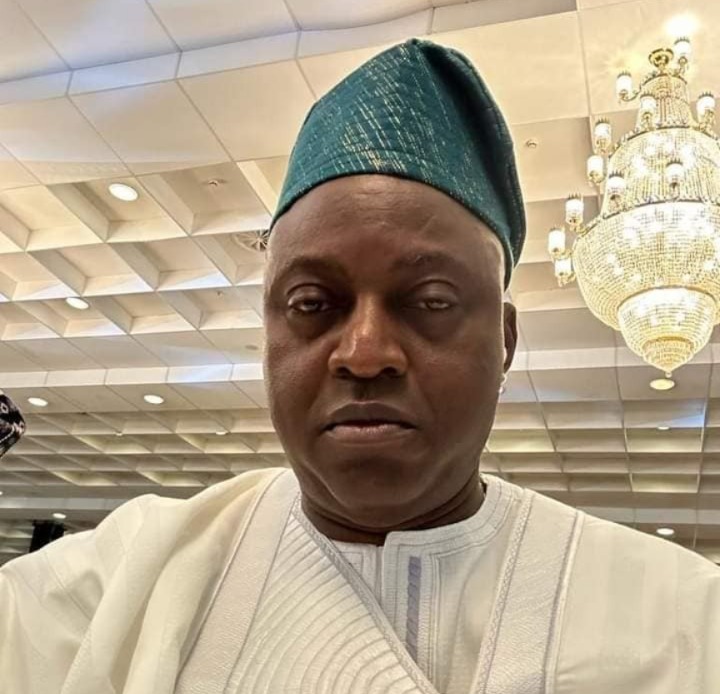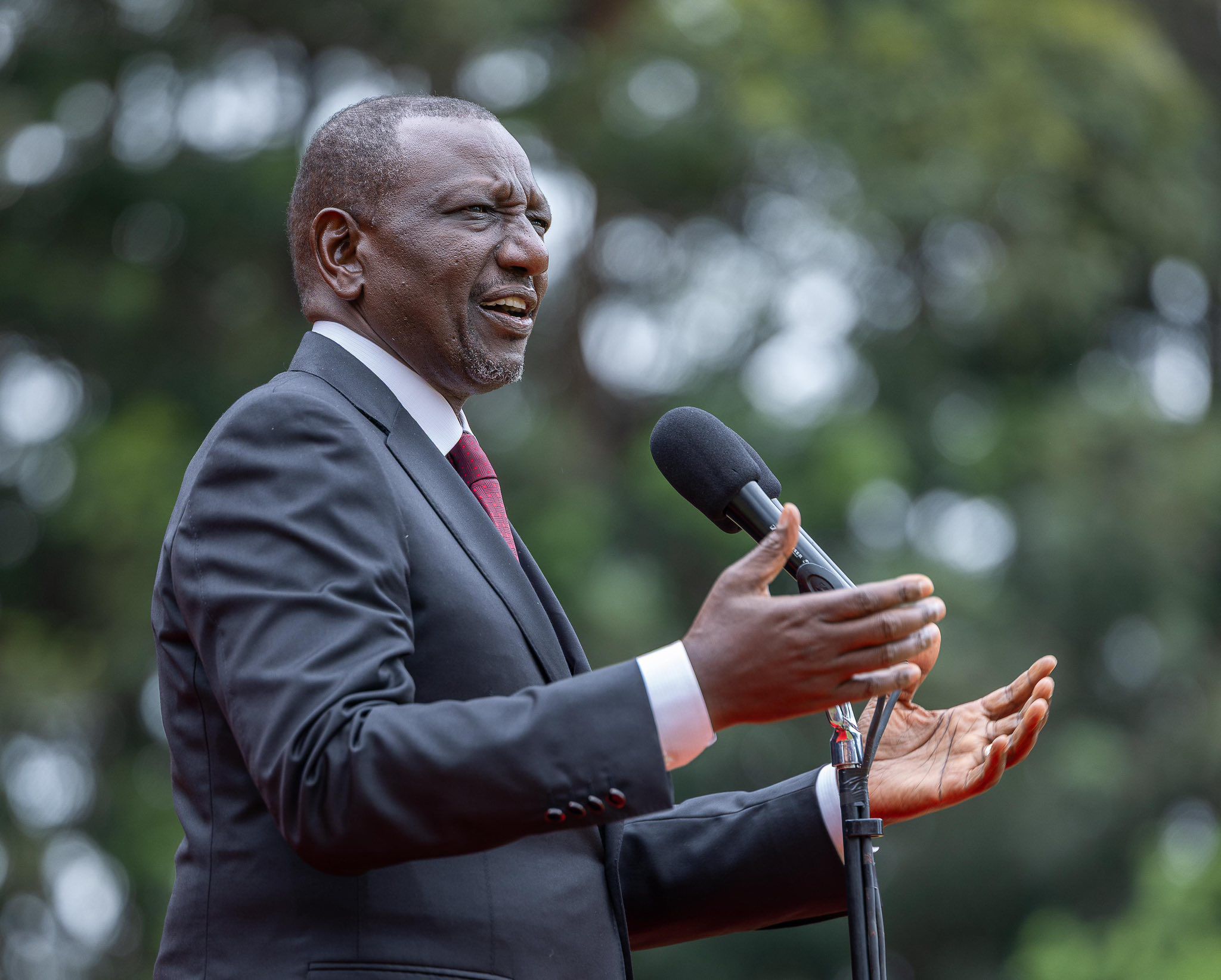The Learning Curve: What Does it Say for Indian Economy?
Can you tell us about your journey into the field of Economics and what initially sparked your interest?
My father was an eminent Professor of English, and he had acquired his Ph.D. degree from the University of Edinburgh. Since we already had a distinguished scholar in English in the family, I felt it made sense to explore a different field. I was always drawn to Economics, and I chose it as my subject in High School, starting from Class 9, and continued with it throughout my academic journey.
Several milestones further fuelled my interest. In 1976, Milton Friedman was awarded the Nobel Prize for his work in Monetary Economics. The following years saw the award of the Nobel Prize to Bertil Ohlin in 1977 and to Theodore Schultz and Sir Arthur Lewis in 1979. These developments, which were part of our graduate and postgraduate studies, strongly influenced my decision to pursue Economics.
Were there any influential experiences during your college years that shaped your career path in economics?
Certainly! I studied at Lucknow University, and I was privileged to learn from a galaxy of eminent Professors. It wouldn’t be fair to single out one or two individuals, as all my teachers were exceptional. They instilled in me a deep respect for the discipline and a serious, diligent approach to the study of Economics. Their guidance played a vital role in shaping my academic foundation and career path.
What significant achievements in your career are you most proud of?
I’ve been blessed to receive global recognition for my work. I’ve authored seven books and published around 400 research papers. One of the achievements I find most fulfilling is being recognized as a global expert by the United Nations Virtual University. Out of experts worldwide, only 30 individuals were selected, and I’m honored to be among them for my work in the area of Sustainable Development Goals (SDGs), which I’ve been deeply involved in for over 25 years. This recognition is certainly meaningful.
However, what gives me greater satisfaction is my work for the marginalized and deprived sections of society. Contributing back through my efforts in areas like MSMEs, financial inclusion, and through my association with leading colleges and Universities has been rewarding. The idea of giving back to society brings me the greatest sense of fulfilment and gratification.

How would you describe the current state of the global economy, and what do you see as the major challenges it faces?
Historically, Cold War dynamics posed major challenges, but today’s global economy presents a different set of complexities. Over the past several years, the world economy has been growing at a steady pace of around 2.5% to 3%. However, recent years have seen significant disruptions.
One of the major concerns is geo-economic fragmentation. The rise of protectionist policies, especially since Donald Trump’s Presidency began in January 2025, has contributed to this trend. In addition, ongoing geopolitical tensions, such as the prolonged Russia-Ukraine war, and the volatile situation in the Middle East involving countries like Israel and Iran, have created a climate of uncertainty and instability. These overarching developments have added significant volatility to the global economic environment and pose serious challenges.
In your opinion, what role should governments play in addressing economic inequality and ensuring sustainable growth?
When viewed in a proper historical and comparative perspective, we can recall that India’s first Five-Year Plan, launched in 1951, aimed to “bring about a sustained improvement in the standards of living of the people”. Though the era of formal Five-Year Plans has ended, their core objectives remain relevant even after 75 years—economic growth, structural transformation, modernization, self-reliance, and social justice.
Today, governments must focus on broad-basing economic growth to ensure it benefits all sections and regions of society. Strengthening the MSME sector, creating an enabling ecosystem for inclusive development, and leveraging the role of banks and financial institutions as catalysts for transformation are essential. These elements are key to addressing inequality and fostering sustainable, equitable growth.
How can inclusive growth be achieved in India?
India has made significant progress in recent years in advancing inclusive growth, which has always been a central objective of our development planning. There has, however, been a sharper focus on financial inclusion and digital empowerment in the last 10-15 years.
One of the key breakthroughs has been the successful implementation of the JAM Trinity—Jan Dhan Yojana, Aadhaar, and Mobile connectivity. This initiative has brought about a quiet revolution by improving access to banking and government services, especially for the underserved. It has also gained recognition from global institutions like the World Bank and the IMF.
Going forward, efforts must continue to build on this foundation. The JAM framework has been instrumental in reducing leakages, improving efficiency, and ensuring that benefits reach the intended sections of society. Strengthening and expanding this system will be crucial for sustaining inclusive growth.
How would you assess the current status of women’s economic empowerment in India, and what are the key challenges that women face in accessing economic opportunities? How can we increase women’s participation in the workforce?
Women’s economic empowerment in India remains a critical issue. Historically, Indian culture held women in high esteem. There is a Sanskrit shloka that stresses, “यत्र नार्यस्तु पूज्यन्ते रमन्ते तत्र देवताः। यत्रैतास्तु न पूज्यन्ते सर्वास्तत्रा फलाः क्रियाः”—meaning where women are worshiped, the gods reside, and where they are not respected, all actions are fruitless.
However, over the past 200–300 years, women in India have not been accorded the status they rightfully deserve. While the Indian Constitution guarantees equality, these constitutional promises have not always translated into lived realities. Socio-economic barriers, cultural conditioning, and underrepresentation at decision-making levels continue to hinder women’s advancement with women still lagging in credit access and investment participation. This necessitates a paradigm shift from de jure equality to de facto equality.
The Labour Force Participation Rate (LFPR) for women in India rose sharply from 24.6 % in 2017-18 to 47.6 % in 2023-24. But this gender dynamics still needs to be improved. We have a long journey ahead to ensure women’s full inclusion in economic life, not just for their welfare, but also for the broader macroeconomic benefit of the nation.
To increase women’s participation in the workforce and plug gender gaps, a multi-pronged systemic approach is needed: addressing deep-rooted social norms, improving access to education and skill development, ensuring workplace safety and flexibility, and creating targeted policy incentives. Empowering women economically and resolving the paradox of progress—more women working, but without power, protection, or pay parity- is not just a moral imperative but a developmental necessity.
What is the impact of freebies on the Indian economy and respective state economies?
It’s a very sensitive subject that must be handled with nuance and care. Broadly speaking, indiscriminate freebies are not beneficial to the economy. They tend to inflate fiscal deficits—both at the state and central levels—often to unsustainable levels, which can weaken the overall macroeconomic stability.
However, in a politically mixed economic framework like India’s, not all freebies are inherently bad. If they are well-designed, sharply focused, and targeted toward specific developmental goals, they can play a positive role.
Let me give you a few examples. When Nitish Kumar’s government came to power in Bihar in the early 2000s, they introduced a scheme to provide bicycles to school-going girls. This had a profound impact on female education and mobility. Similarly, in Tamil Nadu, the late Chief Minister J. Jayalalithaa was among the pioneers of the mid-day meal scheme. It significantly improved nutrition, boosted school attendance, and contributed to the overall well-being of children, especially girls. So, the key lies in how these welfare measures are structured. Freebies that are development-oriented, focused, and fiscally sustainable can contribute meaningfully to social progress. The problem arises when they are used indiscriminately for short-term political gains without assessing their long-term economic implications.
How has technology impacted the current teaching and learning in economics?
Ubiquitous technology has profoundly impacted all aspects of our lives. Today, despite the 2,500 kilometers separating us, we can communicate seamlessly, thanks to the power of technology. In education, the role of technology has gained a sharper focus, especially in recent years.
During the COVID-19 pandemic, we witnessed a significant shift in how people accessed services. For example, many individuals consulted doctors online and received prescriptions through video calls. Similarly, educational institutions quickly adapted, leveraging information technology to continue teaching remotely. While this is still in its early stages, I am confident that educational institutions will increasingly harness the potential of technology in the future, expanding their use for more effective and accessible learning.
What steps should the government employ to increase or generate employment opportunities?
The government must carefully examine the broader process and pattern of economic development. Micro, Small, and Medium Enterprises (MSMEs) can play a significant role in contributing to employment generation, and while the government has rightly focused on this sector, more could be done to fully leverage its potential.
Educational institutions can also be a crucial catalyst for employment creation. For the last 10–15 years, the government has focused on skill development and entrepreneurship, which are vital in expanding the scope for employment. Given that the availability of jobs in the government and the public sector is limited, vocational education needs to be explored more meaningfully. By enhancing vocational training programs, the government can equip individuals with the skills needed for a variety of industries, ensuring greater employability in the private sector.
What steps should the government take to eradicate black money, and what role should citizens play in complementing the government’s efforts?
This is indeed a multidimensional issue. Estimates of black money in India range from 20% to 40-50% of the GDP, figures that are both huge and alarming. Since the economic reforms of 1991, several initiatives have been taken, such as dismantling the “Inspector Raj” and “licence, quota, and permit Raj”, and promoting liberalization. These efforts have laid the groundwork for combating black money, but there is still much to be done.
The process of liberalization must continue with a more focused approach, ensuring that individuals who engage in corrupt practices are held accountable. This does not mean that liberalization and effective punishment are contradictory; rather, they are two sides of the same coin. On the one hand, greater liberalization fosters a more open and competitive economy, but on the other hand, if people step out of line and indulge in corrupt practices, there must be effective and swift punishment for them.
Citizens also play a crucial role in supporting the government’s initiatives. They must remain vigilant and report any instances of corruption or illegal activities. Public awareness and participation are key to ensuring that these measures are effective, and black money is gradually eliminated from the system.
What are the key strengths and weaknesses of the Indian economy as of today?
India’s key strengths are significant. Excluding the two years affected by COVID-19 (2019 and 2020), India has consistently achieved a growth rate of 6.5% to 8.5%. In comparison, the global economy has grown at an average rate of only 2.5% to 3%, positioning India as a strong performer on the global stage. As the IMF’s First Deputy MD Ms. Geeta Gopinath has often highlighted, India is a bright spot in the global economy. In fact, 17% of global incremental growth comes from India, underscoring its importance as an economic leader across various sectors.
However, there are also key challenges. At the macroeconomic level, issues such as fiscal deficit, inflation, and the current account deficit persist. Additionally, India still faces significant concerns related to poverty, unemployment, and inequality in the distribution of income and wealth.
What are the most pressing economic issues facing India, and what policies or strategies do you recommend to address them?
Technology must be a key driver moving forward. Comprehensive studies by institutions like the IMF have shown that “productivity-induced technological gains” in India are unparalleled globally. Additionally, the digital economy is emerging as a major growth engine. Beyond technology, India faces issues such as regional imbalances and sectoral inequalities. While high-growth sectors should be prioritized, the focus should also be on enhancing efficiency and productivity across all sectors.
Exports have been a significant growth driver, with India’s exports reaching over $821 billion in FY 25. However, despite these successes, challenges persist. These issues need to be tackled with a broad-spectrum policy approach that focuses on improving the overall efficiency and productivity of the Indian economy.
In the context of India’s demographic dividend, how can the country best harness its young workforce to drive economic growth?
The concept of India’s demographic dividend first came into focus in October 2003. Historically, a large population was often viewed as a hindrance to economic development, a notion rooted in Thomas Malthus’ classic essay An Essay on the Principle of Population published in 1798. However, in 2003, Goldman Sachs, through the work of an American Professor Dominic Wilson and an Indian economist Roopa Purushotham, presented a new perspective. They demonstrated that a large population could be a boon and a transformative force for economic growth.
To fully leverage India’s demographic dividend, critical issues like health, education, and employment must be addressed effectively. Without these foundational areas in place, India’s demographic dividend could turn into a demographic disaster. By focusing on these key sectors, India can unlock the potential of its young workforce to drive economic growth.
What are your thoughts on the role of digitalization and fintech in shaping the future of the Indian financial sector and promoting financial inclusion?
As I mentioned earlier, digitalization has become a significant growth-inducing force. If you examine the data, you’ll find that digitalization contributed to 11.8% of India’s GDP in FY 2022-2023, with plans to scale it to 20% by 2030. A wide range of forces are at play, with banks and financial institutions leading the charge in embracing digitalization. Beyond these sectors, there is hardly an economic activity left untouched by the inexorable force of digitalization, whether it’s in educational institutions, banks, financial institutions, or MSMEs, digitalization is set to grow and unlock its enormous potential.
What are the reasons for the growth of the informal economy in India? Why is the gig economy growing? What are the steps that can be taken to increase the standard of living of workers in the informal sector?
The informal sector is enormous in India, with approximately 90% of people employed in it. I have conducted extensive research on the non-farm sector, and what I found is that addressing marketing, credit, technology, and infrastructure upgrades in this sector is essential. As for the gig economy, it is growing due to the increasing demand for flexible work arrangements. To broaden and improve the gig economy, social security measures, minimum income levels, and clear regulations should be implemented. These steps could significantly improve the standard of living for workers in both the informal and gig sectors.
Can you share your predictions for the Indian economy in the next 5 years, 10 years, and by 2047, considering current trends and potential disruptions?
As economists, we always preface our observations with the famous French term “ceteris paribus,” meaning “other things being equal.” Currently, India is the fifth-largest economy in the world, and we are on track to move to the third slot within the next year or so. By 2047, I firmly believe that India will be one of the top two global economies. There may be differing opinions on whether India will be number one or China will rise to that position, but undoubtedly, India will be a leading global economic powerhouse by 2047—provided the current trends continue and disruptions are managed effectively.
How do you view the future of global trade, especially in light of recent protectionist measures in some countries?
The global economy has been thrown into a bit of turmoil by protectionist measures, especially those initiated under Donald Trump’s administration. Historically, one of the cardinal features of free trade and a capitalist economy has been the free movement of goods, services, and people. However, protectionist measures and increasing geo-economic fragmentation have caused significant disruptions in global trade. Various countries and parties are working at both bilateral and multilateral levels to address these challenges.
As the saying from the Holy Bible goes, “This too shall pass”, we must remember that such disruptions are not permanent. While the current global trade challenges may persist for a while, I am optimistic that they will eventually be resolved. In the meantime, we must continue to focus on promoting international trade and addressing the underlying issues to sustain long-term growth.
What impact do you foresee from emerging technologies like AI and automation on employment and the overall economy?
AI has been a game changer in certain industries, showing remarkable potential to enhance efficiency and productivity across various sectors. However, like any powerful technology, its impact can have positive and undesirable consequences. The key lies in how AI is utilized. For instance, I’ve been an examiner for Ph.D. theses in IITs, IIMs, State and Central Universities, and some Universities abroad. There is a growing trend of individuals using AI tools like ChatGPT to take shortcuts, resorting to copy-paste instead of making a genuine effort. This unethical use of AI can undermine the progress we seek. Therefore, while AI has the potential to significantly boost efficiency and productivity, it must be used in an ethical manner. Its use should be carefully monitored to ensure that it contributes to genuine progress, rather than encouraging unethical practices.
How do you foresee the impact of climate change on economic models and policies, and what adaptation strategies should countries, including India, adopt?
Well, sometimes we believe that the climate change issue is peripheral, which is outside the mainstream but now it’s increasingly realized that the climate change issue is not peripheral, it is central to the development strategy. The problems of climate change and economic growth, and structural transformation are in no way contradictory; they must be intermeshed and move in tandem. One issue I would like to touch upon briefly here is that India has been effectively articulating the issue of historical emissions of carbon dioxide (CO2). If you look at the industrialization process all over the world, this gained a sharp momentum with the invention of the steam engine sometime around the 1750s. So, the western countries like England, Europe, and America have been polluting the environment for the past 200 years, whereas this industrialization picked up in India only in the last 60 to 70 years. This aspect also needs to be factored into a holistic framework of climate change strategies at the global level.
Given the recent shifts in global supply chains, what should India’s strategy be to position itself favourably in the changing landscape?
Well, in Economics, Finance, Banking, we always say never put all your eggs in one basket. But this has acquired a sharper thrust now. We are trying to diversify to mitigate the impact of Trump’s tariffs. The US is our largest trading partner, and the US is also our largest exporting destination. Hence, if we take a hit, it is unrealistic to expect it to be offset by others. But we must try to minimize the impact by greater bilateral partnership between India & the UK, India & Europe, Gulf countries, Africa to a greater measure, BRICS countries. So, all these measures will help to reduce the impact of the hit that we take. And even in American tariffs, there is a silver lining in that we have been slapped with a tariff of 25%, but most of our competitors have been hit harder, China – 145%, Vietnam, Indonesia, something like 40-45%. Hence, there is a blessing in disguise in the sense that this makes our products much cheaper. While everything may not be hunky-dory, there is no reason for all gloom and doom in this sphere.
What are your thoughts on the rise of digital currencies and their potential to reshape the financial landscape?
Digital currencies in India are in the early days. They have great potential, but in India, we have some kind of fascination with cash. Demonetization was brought about to reduce the extent of cash in the economy. Digital payments in India grew 90-fold in 12 years. India accounts for 46% of all digital payments worldwide, and UPI transactions now account for 80% of all digital payments in India. All these online mechanisms, e.g., Unified Payments Interface (UPI), Net Banking, Digital Wallets have picked up considerably, and the process across various sectors and segments of the Indian economy has increased significantly. Banks handle about 80% of transactions through digital means. But digital currency may take some time to gain wide acceptance.
What advice would you give to aspiring economists or students pursuing degrees in economics?
I would say that there are no shortcuts to success. Hard work, perseverance, and sometimes disappointments are inevitable, but you should never give up. As far as the specific Economics domain is concerned, focusing on areas like data analytics, the ability to connect the dots, and looking at the big picture without being oblivious to details will place an Economics student in good standing.
What are your personal dreams and aspirations related to economics or other areas of life?
The central part of my dream is to see India not just as it was earlier identified—a land of snake charmers, and elephants, with Bangalore also once full of snake charmers—but as a nation that has come of age. Going forward, my dream as an Economist is to see India emerge much stronger on the global stage, consolidating its economic muscle and heft in the comity of nations.
Are there any misconceptions about economics that you’d like to clarify for our readers?
One common misconception is that Economics is simply the pursuit of riches. However, today it is widely recognized as an effective instrument for improving the living standards of people across the globe. Development, in this context, has become a goal not only within individual countries but also across countries, focusing on creating a better quality of life, reducing poverty, and ensuring sustainable growth.
Your favourite economic theory or economist?
One of my favourite economists is Jagdish Bhagwati, who was a Professor at Columbia University for about 30-40 years. His concept of Immiserizing Growth has made a profound impact on the discipline of Economics worldwide. This theory challenges the assumption that economic growth always leads to welfare improvement, highlighting that in certain circumstances, growth can actually lead to a reduction in welfare.
Best book or research paper you’ve read recently in economics?
As I mentioned earlier, I go through a wide range of publications, including those from the IMF and RBI, which release numerous insightful reports and revised general predictions. Recently, I read a book by Abhijit Banerjee, who won the Nobel Prize in Economics around 3 to 4 years ago. His work continues to offer significant contributions to the field. These publications are all crucial for keeping up with the latest developments in economics.
One economic policy change you’d like to see implemented in India?
I would advocate a greater process of economic reforms, particularly in the areas of land and labor. As students of economics know, there are several factors of production, and while capital and entrepreneurship have seen improvements, land and labor have not been significantly influenced by the process of economic reforms. Focused reforms in these areas could significantly boost India’s economic growth and productivity.
On a lighter note, what are your personal interests or hobbies outside of economics?
I enjoy reading fiction and poetry in English, Hindi and Urdu. I also have an interest in a little bit of Sanskrit. I have a variety of other interests-Cricket, travelling, etc. which keep me engaged outside Economics.
Your favourite economic concept or theory that you find most relevant today?
I would refer to two concepts. First, Adam Smith’s concept of the Invisible Hand, introduced in his 1776 publication, is still highly relevant today. It explains how individuals pursuing their own self-interest unintentionally contribute to the overall economic benefit of society. Second, the idea of “freebies” often comes into focus, but we must remember that nothing is truly free. If you are receiving something, someone else is ultimately paying for it. This brings attention to issues like subsidies and cross-subsidization, which are important in understanding the dynamics of public finance and the economy today. There is no such thing as “free” in a modern economy.












